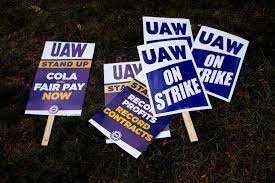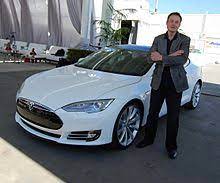Unlocking the Future: Analyzing the UAW-Stellantis Deal and Its Impact on the Automotive Industry

Introduction
In the ever-evolving landscape of the automotive industry, monumental developments frequently capture the attention of industry enthusiasts and investors alike. The UAW-Stellantis deal, inked on October 28, 2023, is one such development that has sent ripples throughout the sector.
Background
The United Auto Workers (UAW)
The United Auto Workers, or UAW, is a powerful labor union representing workers in the automotive industry. Founded in 1935, it has a rich history of advocating for fair wages, workers’ rights, and job security. With a strong presence in the United States, the UAW has played a pivotal role in shaping labor relations within the automotive sector.
Stellantis: A Global Automotive Giant
Stellantis, a multinational automotive corporation, is the result of the merger between Fiat Chrysler Automobiles (FCA) and Peugeot S.A. The company boasts a vast portfolio of iconic brands, including Jeep, Chrysler, Ram, Dodge, Peugeot, and Citroën, among others. The merger created an automotive powerhouse with a global reach.
The Deal
On October 28, 2023, the UAW and Stellantis reached a landmark deal that has the potential to reshape the future of the automotive industry.
Key Provisions
- Wage Increases: The agreement includes substantial wage increases for UAW members, addressing a longstanding concern among workers in the industry. This provision aims to enhance the quality of life for the workforce and strengthen their financial security.
- Job Security: Job security has been a focal point for the UAW. The deal includes commitments from Stellantis to retain existing jobs and create new opportunities for UAW members. This ensures the stability of employment within the industry.
- Investment in Electric Vehicles (EVs): In response to the global shift towards electric vehicles, the UAW-Stellantis deal includes significant investments in EV production and development. This move aligns with the industry’s transition towards sustainable mobility solutions.
Implications
The implications of this deal are far-reaching and worth exploring in greater detail.
Enhanced Competitiveness
By addressing wage concerns and ensuring job security, Stellantis aims to create a more motivated and satisfied workforce. This, in turn, can lead to increased productivity and innovation, ultimately enhancing the company’s competitiveness in the global automotive market.
Embracing Sustainability
The commitment to investing in electric vehicles aligns with the automotive industry’s growing focus on sustainability. Stellantis, with its wide range of brands, is well-positioned to make a significant impact on the development and adoption of electric vehicles.
Conclusion
The UAW-Stellantis deal marks a pivotal moment in the automotive industry, with implications that extend beyond the negotiating table. As we’ve explored, the agreement’s key provisions and their potential consequences are poised to make a significant impact on the industry’s future. Whether it’s through increased worker satisfaction, job security, or a stronger commitment to sustainability, the deal signals a promising shift in the automotive sector. As we keep a close watch on developments in the coming years, it’s clear that this agreement has the potential to shape the industry’s trajectory for years to come










